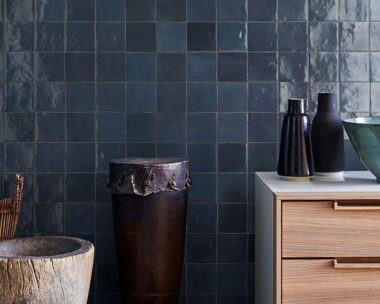If you’re suffering a touch of the winter blues, feasting your eyes on images of rhododendrons is the way to go. They’re unfailingly beautiful and, hey, they don’t even come in blue.
It’s never hard to find an excuse to splash out on a new tree for the garden, although convincing your better half is not always a walk in the park. So I was secretly delighted when I undearthed from the top of the cupboard two pine boxes containing the ashes of our late golden retriever Pedro and our boxer Chai, who followed one another to doggy heaven a couple of years ago.

Clean and simple. This white flower with a dusting of lemon and maroon must have inspired many a bridal outfit.
“I want to bury them under a rhododendron,” I told The Partner, sorrowfully.
“We don’t have one,” he replied, helpfully.
“Easily solved,” I said, whipping out the wholesale nursery catalogue.
He had a lot of reasons why we shouldn’t buy one for the dear departed dogs – the main point being large ones (rhododendrons, not dogs) are expensive and, secondly, the humid north provides less than ideal conditions for these aristocrats of the Himalayas.
But I had a trump card. “My mother’s ashes were buried under a rhododendron in her garden in Dunedin,” I said.
The Partner is sentimental in the extreme, so it was no contest – a rhododendron is now on the shopping list.I’m mindful of the fact that it will need to be nurtured – rhododendrons have a long-established reputation for only growing happily in cold mountain gardens with deep soil and high rainfall – but optimistic in view of the fact that there are three or four massive rhododendrons growing quite close to here.

Grow vireyas under the dappled shade of a palm tree and they’ll be halfway to happiness.
I could have taken the easy route with a vireya. Unlike the Himalayan varieties that were taken to Europe and then subsequently made their way to the southern hemisphere, vireyas come from places such as Indonesia, Malaysia and Papua New Guinea. Vireyas’ warm-climate origins mean they can be grown in many parts of New Zealand. Some originate in highland areas, so they’re reasonably cold tolerant, but almost all dislike the frost. And to all intents and purposes, they just love it here. We already have a dozen or so in our garden, and so does just about everybody else in town.
They’re different from the Himalayan varieties, with glossy leaves, a long flowering period and heaps of colours. Many of the vireya flowers come in shades of orange and salmon, as well as the more traditional pink and white. While they don’t produce the massed show the cold-climate rhodos do, they flower for months.

Cool-climate rhodies come in lavenders, purples and violets.
They like extra drainage, so unless you have really open soil, you might need to modify it with open potting mix, commercial compost, ponga fibre, peat or pumice.
A few hours of morning sun and some dappled shade for the afternoon is ideal. The hot colours put up with a bit more sun – the paler colours prefer shade. Filtered light from taller trees overhead is good, but don’t plant them under dense foliage or they won’t thrive.
Keep a layer of light mulch over the roots and feed in spring after the first flush of flowers. Make sure you water your fertiliser as soon as you have applied it.

The combinations are endlessly varied and demand to be marvelled at.
Now, to the real thing. Cold-climate rhododendrons are, understandably, happier in cooler areas. There’s one called rhododendron ponticum, with gorgeous violet blooms, that does so well in the UK, the Brits think it’s a native.
They like acidic, humus-rich soil, so dig plenty of old cow manure, pre-moistened peat and half-rotted leaf litter into the bed before planting.

Let there be light. Simbu sunset is one of the best known and loved vireyas, and you can see why.
You can grow the smaller varieties in pots, but when you see a massive rhododendron smothered in flowers, why on earth would you limit its size?
The one under which my mother’s ashes are buried is about 6m high and almost as wide. It’s a deep red and is always the first thing to flower in that part of the garden, unfailingly turning on a stunning display early in October.

Head hunting.
Rhododendrons have a history that belies their regal, elegant demeanour. Horticultural raiders in the 19th century made forays into the mountainous regions of China to find desirable species which would satisfy the British appetite for the plants. Despite the dangers of man-hunting dogs and tribesmen, there are now around 900 species of rhododendron that have been inter-bred to create more than 10,000 hybrids.




